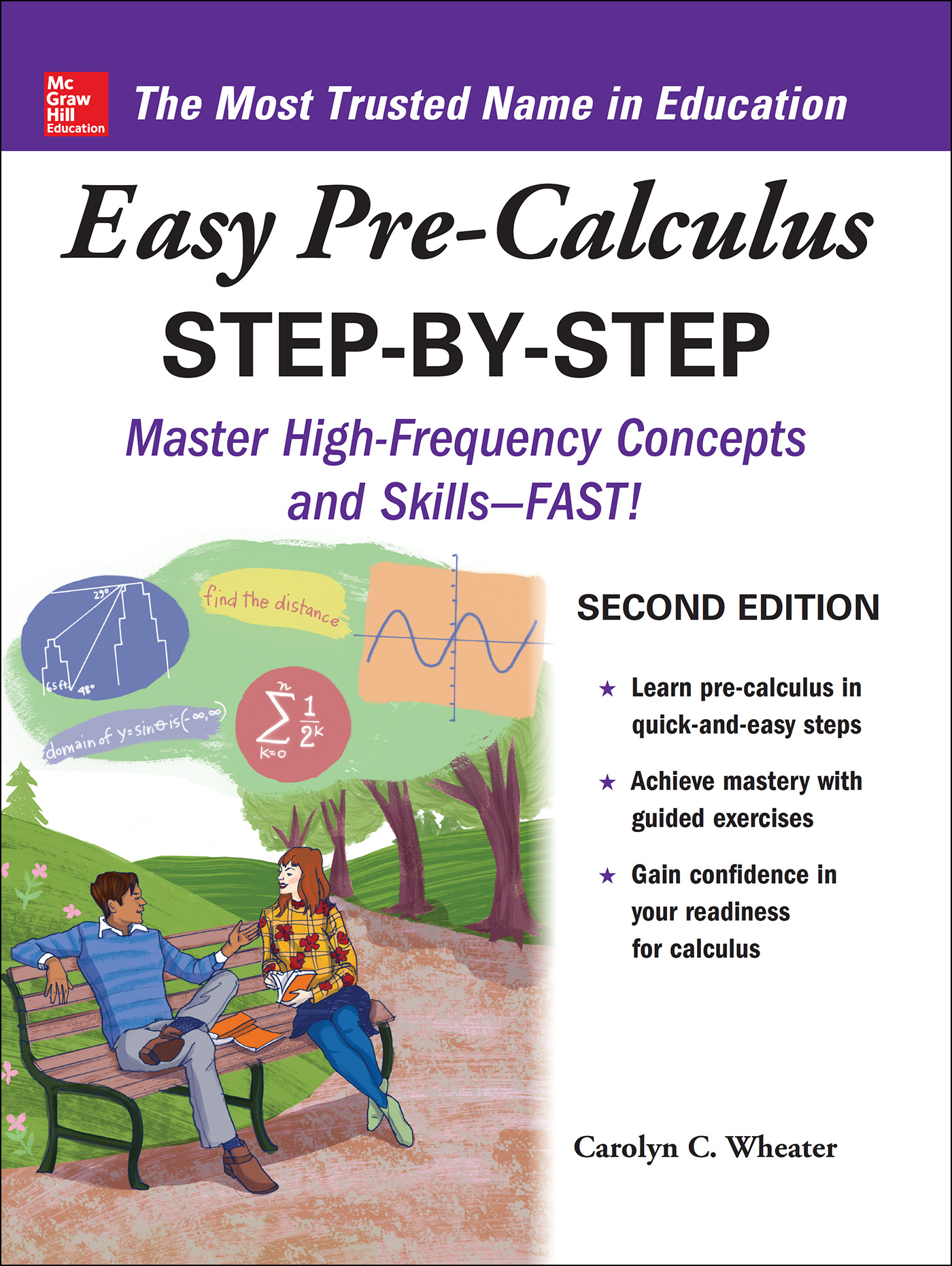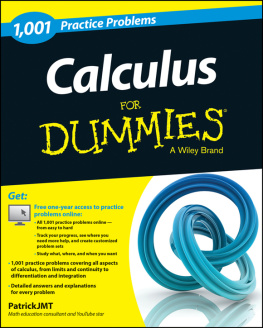Contents
Guide
Page List


Copyright 2019, 2012 by McGraw-Hill Education. All rights reserved. Except as permitted under the United States Copyright Act of 1976, no part of this publication may be reproduced or distributed in any form or by any means, or stored in a database or retrieval system, without the prior written permission of the publisher. ISBN: 978-1-26-013512-1
MHID: 1-26-013512-8 The material in this eBook also appears in the print version of this title: ISBN: 978-1-26-013511-4, MHID: 1-26-013511-X. eBook conversion by codeMantra
Version 1.0 All trademarks are trademarks of their respective owners. Rather than put a trademark symbol after every occurrence of a trademarked name, we use names in an editorial fashion only, and to the benefit of the trademark owner, with no intention of infringement of the trademark.
Where such designations appear in this book, they have been printed with initial caps. McGraw-Hill Education eBooks are available at special quantity discounts to use as premiums and sales promotions or for use in corporate training programs. To contact a representative, please visit the Contact Us page at www.mhprofessional.com. Other titles in the series:Easy Mathematics Step-by-Step, William D. Clark, PhD, and Sandra Luna McCune, PhD Easy Algebra Step-by-Step, Sandra Luna McCune, PhD, and William D. Clark, PhD TERMS OF USE This is a copyrighted work and McGraw-Hill Education and its licensors reserve all rights in and to the work.
Use of this work is subject to these terms. Except as permitted under the Copyright Act of 1976 and the right to store and retrieve one copy of the work, you may not decompile, disassemble, reverse engineer, reproduce, modify, create derivative works based upon, transmit, distribute, disseminate, sell, publish or sublicense the work or any part of it without McGraw-Hill Educations prior consent. You may use the work for your own noncommercial and personal use; any other use of the work is strictly prohibited. Your right to use the work may be terminated if you fail to comply with these terms. THE WORK IS PROVIDED AS IS. McGRAW-HILL EDUCATION AND ITS LICENSORS MAKE NO GUARANTEES OR WARRANTIES AS TO THE ACCURACY, ADEQUACY OR COMPLETENESS OF OR RESULTS TO BE OBTAINED FROM USING THE WORK, INCLUDING ANY INFORMATION THAT CAN BE ACCESSED THROUGH THE WORK VIA HYPERLINK OR OTHERWISE, AND EXPRESSLY DISCLAIM ANY WARRANTY, EXPRESS OR IMPLIED, INCLUDING BUT NOT LIMITED TO IMPLIED WARRANTIES OF MERCHANTABILITY OR FITNESS FOR A PARTICULAR PURPOSE.
McGraw-Hill Education and its licensors do not warrant or guarantee that the functions contained in the work will meet your requirements or that its operation will be uninterrupted or error free. Neither McGraw-Hill Education nor its licensors shall be liable to you or anyone else for any inaccuracy, error or omission, regardless of cause, in the work or for any damages resulting therefrom. McGraw-Hill Education has no responsibility for the content of any information accessed through the work. Under no circumstances shall McGraw-Hill Education and/or its licensors be liable for any indirect, incidental, special, punitive, consequential or similar damages that result from the use of or inability to use the work, even if any of them has been advised of the possibility of such damages. This limitation of liability shall apply to any claim or cause whatsoever whether such claim or cause arises in contract, tort or otherwise.
Preface
Easy Pre-Calculus Step-by-Step is an interactive approach to the mathematics necessary for pre-calculus.
It contains completely detailed, step-by-step instructions for the skills and concepts that are the foundation for advanced mathematics. Moreover, it features guiding principles, cautions against common errors, and offers other helpful advice as pop-ups in the margins. The book leads you from basic algebra to a clear understanding of functions, explores fundamental trigonometry, and introduces you to the notion of limits. Concepts are broken into basic components to provide ample practice of fundamental skills. Pre-Calculus, as its name implies, is meant to prepare you for calculus, but what does that mean? To succeed in calculus, or any advanced mathematics, you will need strong algebraic skills as well as a clear understanding of functions in general and the many different types of functions specifically: polynomial, rational, exponential, logarithmic, and more. You will want to build skill in graphing quickly by means of transformations, and youll explore the polar coordinate system.
From the construction of the trigonometric ratios in right triangles to the definition of the trigonometric functions in the unit circle, you will extend your knowledge of relationships and how to apply them. You may even investigate sequences and series and peek into the future by exploring limits. Pre-Calculus may seem like too much to master, and the wide variety of topics may feel difficult to organize. With this step-by-step system, success will come. Learning pre-calculus, as with any mathematics, requires lots of practice. It requires courage to admit what you do not know, willingness to work on the problem, and a calm, orderly attempt to use what you do know.
Most of all, it requires a true confidence in yourself and in the fact that with practice and persistence, you will be able to say, I can do this! In addition to the step-by-step explanations and sample problems, this book presents a variety of exercises to let you assess your understanding. After working a set of exercises, use the solutions in the Answer Key to check your progress. We sincerely hope Easy Pre-Calculus Step-by-Step will help you acquire the competence and the confidence you need to succeed in pre-calculus, calculus, and all your mathematical undertakings.
Graphs and the Graphing Calculator
A great deal of work in pre-calculus is centered on functions and their graphs. While the use of the graphing calculator has made it possible to explore many more, and many more complicated, functions than in the past, the ability to sketch the graph of a function by hand quickly is still an essential skill.

Step 1.
Review Linear Equations
Your first introduction to graphing was linear functions, and they will always be important. Many of the skills you developed with linear graphs will carry over to other functions.
Recognize Horizontal and Vertical Lines
Recognizing the linear equations that dont behave in a typical fashion will save you time. Horizontal lines, because they have a zero slope, have an equation of the form
y =
c, where
c is some constant. Vertical lines are the real oddity. They are not functions, and their equations dont fit the
y =
mx +
b standard.
The equation of a vertical line is x = c, where c is a constant.
Graph Quickly
While constructing a table of values is always available as a graphing method, it is time consuming, and linear equations in particular allow for quick sketching methods.
Slope-intercept. If the equation is in slope-intercept, or
y =
mx +
b form, or can easily be converted to that form, plot the
y-intercept (0,
b), and then count the slope to locate other points on the line. Connect the points to create the line.





 Copyright 2019, 2012 by McGraw-Hill Education. All rights reserved. Except as permitted under the United States Copyright Act of 1976, no part of this publication may be reproduced or distributed in any form or by any means, or stored in a database or retrieval system, without the prior written permission of the publisher. ISBN: 978-1-26-013512-1
Copyright 2019, 2012 by McGraw-Hill Education. All rights reserved. Except as permitted under the United States Copyright Act of 1976, no part of this publication may be reproduced or distributed in any form or by any means, or stored in a database or retrieval system, without the prior written permission of the publisher. ISBN: 978-1-26-013512-1 Step 1.
Step 1.